
IAS stands for independent activity schedule. It is typically a series of pictures or words that provide our students with visual cues to complete a series of tasks. These visual tools help our students stay on task and transition from one activity to another. It allows for more independence by significantly reducing the number of verbal instructions required.
I am fortunate to have the shelving unit shown below. This was a recent purchase by my school. Before that, I had bins on a bookshelf. My old bins were all different colours and sizes and that truly did not affect our IAS time.
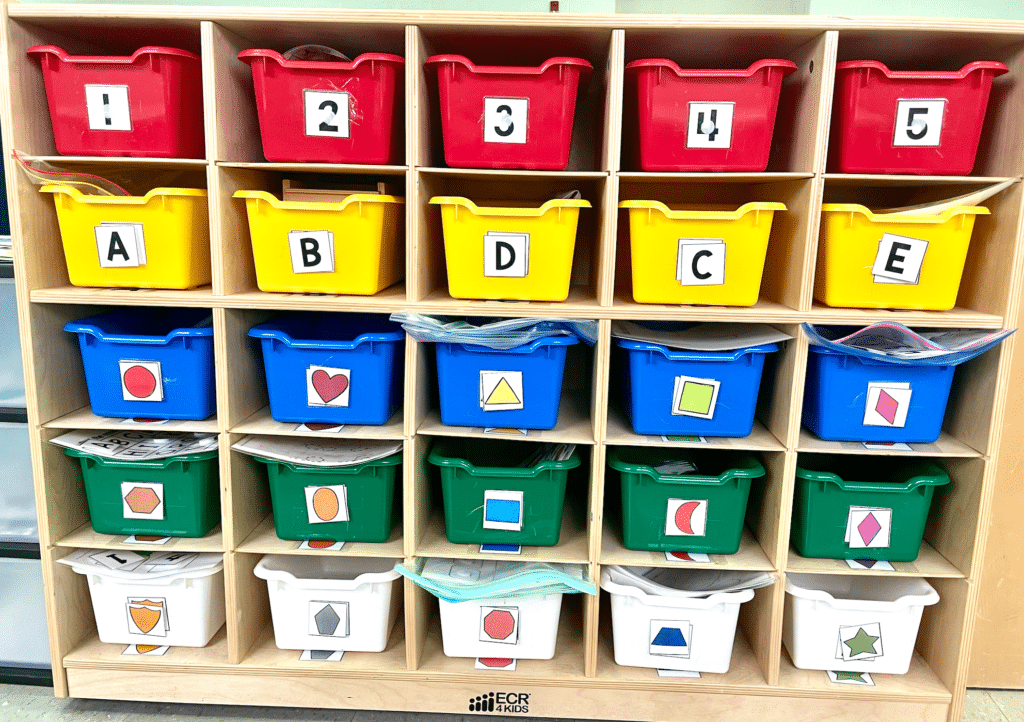
First, you need to decide how many bins you would like to do. I typically start with 2 – 3 activities for each student. Each activity will be in its own bin. Each bin will be given a symbol. As you can see on my bins, I have letters, numbers and shapes. You can pick any symbols, but I suggest not using anything too distracting. You can grab a copy of my IAS symbols for free here.
Then, you will need to print three copies of your symbols. For the first set you will tape to your bins (they have to all be different). The second set will go on the actual shelf (this helps students know exactly where to return their bins). The final set will need to be laminated along with your schedules (these will be the attachment pieces). You can use my free IAS schedules.
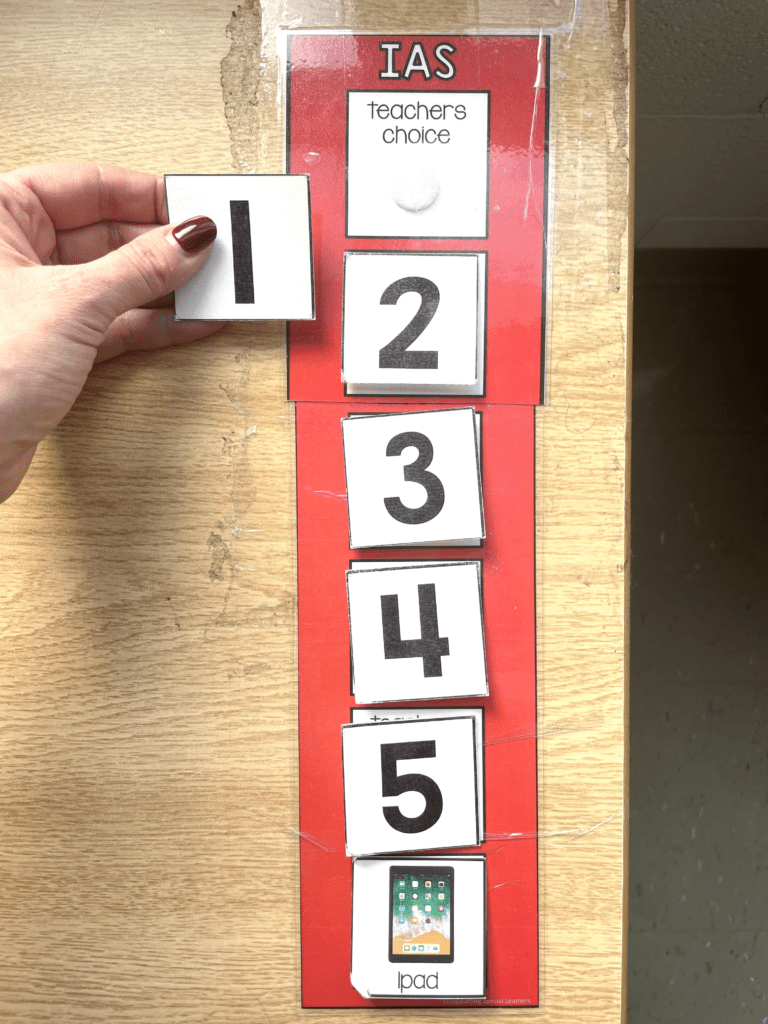
Once everything is set up, it is time to implement your IAS! Here are the steps to implementing a successful and functional IAS.
The purpose of an IAS is to have independence. The tasks should be familiar and mastered. This may not be independent for some students for a while, which is okay! The goal is to become independent. Here are a few things to keep in mind when setting up IAS in your classroom
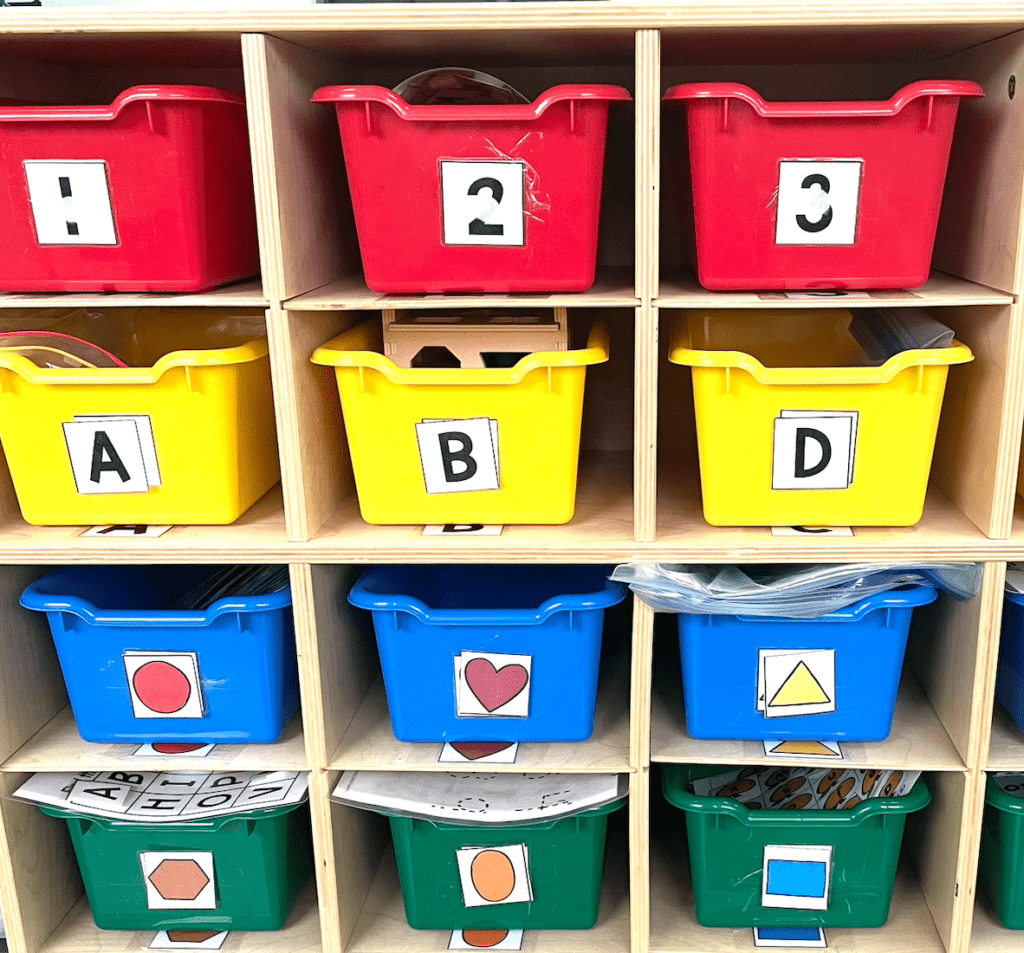
Some of my students need bins closer to their deck or larger bins to hold their activities. I frequently use a three-bin drawer setup. This particular student requires fewer transitions and a larger space. In these three drawers, I can put much larger activities. Typically you would see a shape sorter or a puzzle, some laminated pages and maybe an open-ended activity such as play dough. For open-ended activities, your student must be able to use a timer. I set the timer for 10 minutes, and he can use the play dough on our learning mats.
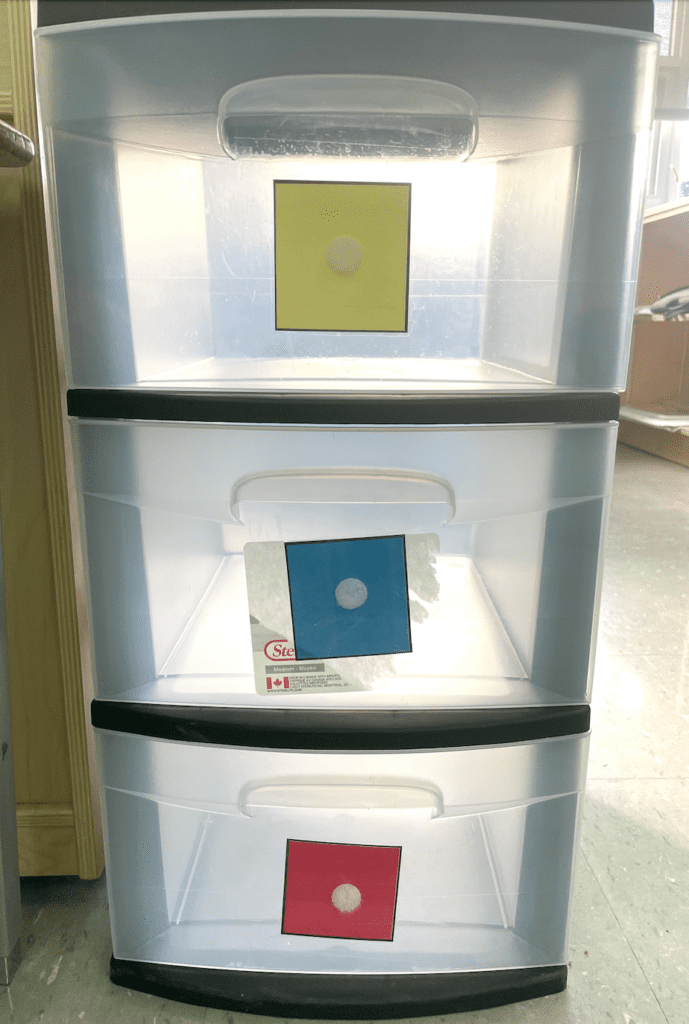
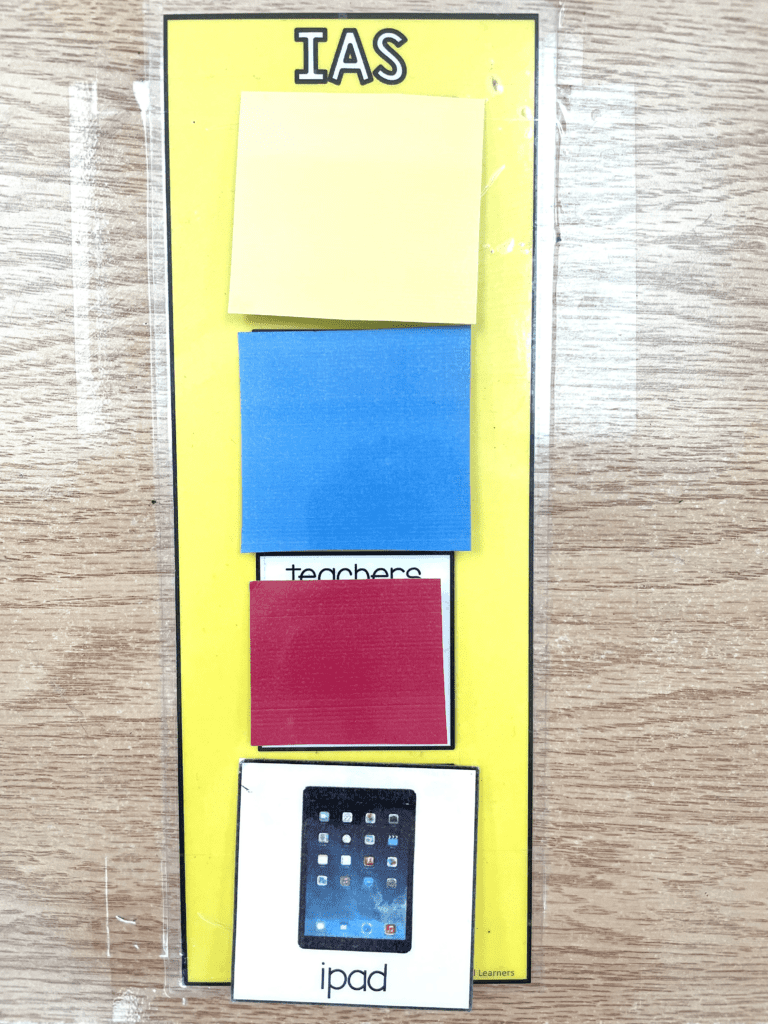
Trust me; you won’t regret it! Eventually, your IAS will run so seamlessly that your students won’t need you! You can use this time to pull students for their one-on-one teaching time!
Our goal is to create engaging learning materials and educational resources that will help you save time.